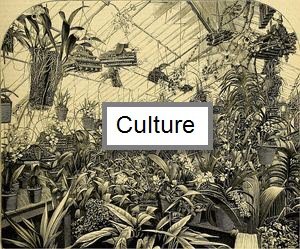How to Make Your Orchids Look Their Best
BEFORE YOU PACK UP YOUR flowering orchids and head off to your orchid society’s show table or AOS judging center, or to enter the nearest orchid show, take a few minutes to make sure each of your plants looks its best.
First, carefully inspect every plant for insects or disease. Be sure to check the undersides of leaf surfaces and axils and even the backs and interiors of the flowers, where pests can often go unnoticed. A cotton swab dipped in rubbing alcohol may be all that is required to eradicate them. A buggy plant may be regarded as a pariah at an orchid society show table, so you should expect infested plants discovered at orchid shows and AOS judging centers to be disqualified by the judges or show committee.
Do not be afraid to remove fading or unattractive foliage as well as old blossoms from your plants. The same goes for any remaining dried stems from past inflorescences. Dead canes or pseudobulbs, as well as dead aerial roots, should also be removed. Remember that a leafless pseudobulb, such as those on some dendrobiums, is not necessarily dead.
Dried leaf tips can be cut off with a sterilized cutting tool, and if so desired, the dried sheaths on canes or pseudobulbs can be carefully peeled away. Try wetting those with a spray of water to make them easier to remove. If they are stubbornly attached, you may have to wait for them to mature a bit more before you can remove them successfully.
Some exhibitors prefer to detach the dried sheath from any inflorescence that has one, but this must be accomplished with great care or you may unintentionally break or cut off the flowers.
Orchid foliage that is badly spotted by fertilizer sprays or mineral deposits from the water should be cleaned. Do not use commercial leaf polish or leaf shine. These leave an oily, overly glossy appearance that is both unnatural and unattractive. Milk is my personal favorite for cleaning plant foliage. A milk-dampened paper towel that is gently rubbed over the leaves will often clean them in a single application, but the process may need to be repeated to remove stubborn stains. Milk also leaves the foliage with a natural, healthy looking luster. Other growers favor lemon juice for a similar result.
Finally, study each plant individually and determine if staking or wiring could enhance its symmetry or floral presentation. Plants frequently grow in odd directions or produce their flowers in less than ideal postures, both of which might be easily improved with judicious staking. Such mechanics should be as unobtrusive as possible but can frequently impart stature and beauty to an otherwise ordinary-looking specimen. Keep in mind that good staking and wiring leaves the plant with a natural appearance and does not produce rigid results where the subject appears lashed to the stake. Good staking can truly turn a plant that appears rather ordinary into a winner.
Also be certain that each plant is able to stand firmly without falling over. Since many orchids are grown in lightweight plastic pots of a relatively small size in relation to the plant, they are frequently top-heavy, and are susceptible to considerable damage when they topple. It is not uncommon for the other plants on a shelf or bench to help prop up each other, so when you pull one for display, you may need to place its container inside a heavier pot or cachepot to help ensure stability.
Orchid plants cultivated in hanging baskets and on mounts present special problems when the need arises to display them individually. If growth habit and root development allow, hanging plants may be placed on a sturdy base that elevates them a bit above table height. It is a good idea to secure the plant’s container to its support, if possible, to avoid a calamity if the plant is nudged or moved by an unsuspecting onlooker. Tape, wire or cable ties may suffice, depending on the materials of the container and its support. Be sure to remove the wire hanger if you are not hanging the plant.
However, often the only way to effectively display hanging or mounted plants is to suspend them, and this is the time to tap into your creativity. The best solution to the problem will be portable, lightweight, unobtrusive and yet stable. Brackets that fasten to the tabletop, wire mesh stands, old lamp bases and small pedestals all offer possibilities. Do not expect your orchid society, judging center or orchid show committee to solve this problem for you.
It’s a good idea to water every plant thoroughly and allow them sufficient time to drain before transporting them for display or competition. Once they are entered in an orchid show, you probably will not be able to provide them with more than an occasional misting once the exhibit opens to the public.
The plants you take to the orchid society show table or orchid show should be respectable examples of their type and a credit to you as their grower. A few minutes of attention to grooming and preparing them ahead of time will help ensure that they are both.
